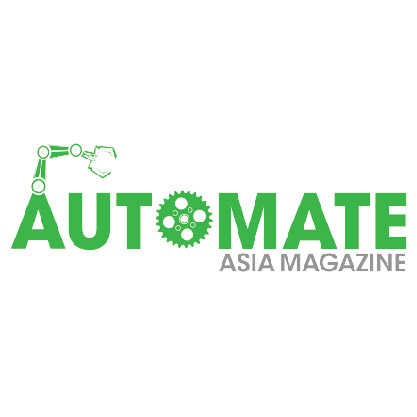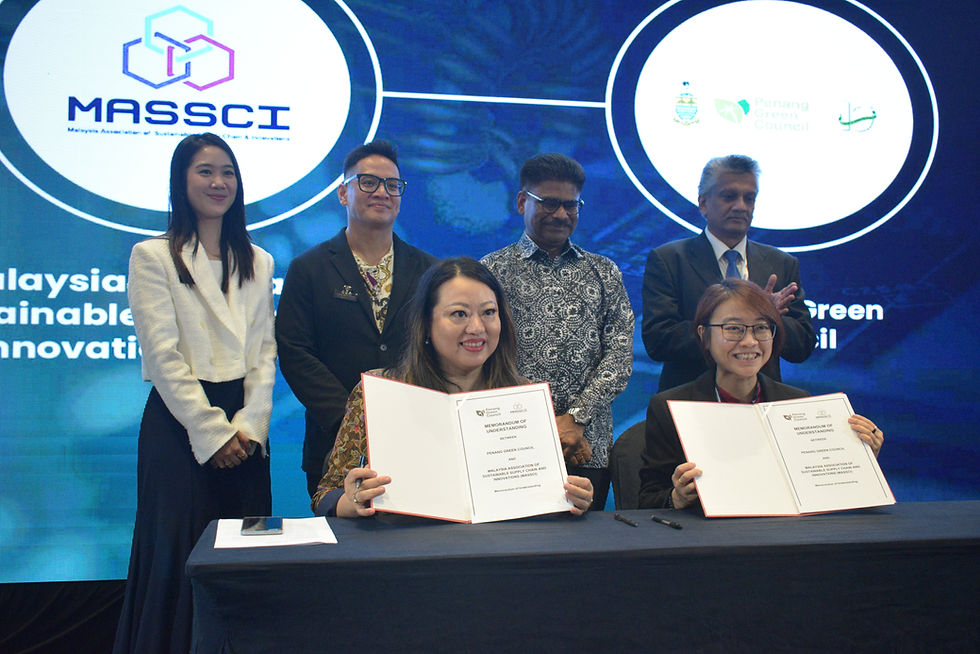Driving Sustainable Innovation in the Semiconductor Industry through Integrated Technologies
- Automate Asia Magazine

- Nov 6
- 8 min read

1. For those who may be less familiar, can you give us a brief overview of Hitachi’s presence and key focus areas in the manufacturing and semiconductor sectors?
Hitachi has a long-standing legacy in advancing industrial innovation, and today we continue to play a pivotal role across both the manufacturing and semiconductor sectors. The semiconductor industry is currently experiencing a surge in demand driven by transformative technologies like AI, electric vehicles, and 5G connectivity. This growth, however, brings significant challenges, including managing escalating costs, mitigating environmental impact, and addressing increasingly complex production processes.
Our integrated approach combines operational technology (OT), information technology (IT), and deep domain expertise to deliver intelligent, future-ready solutions. In manufacturing, we focus on smart production enabled by AI, IoT, analytics, and automation.
For semiconductors, we offer a comprehensive portfolio covering front-end and back-end processes, from precision etching and inspection systems to energy-efficient infrastructure and materials handling. Our solutions are designed to meet the high standards of semiconductor fabrication while supporting global sustainability goals.
2. How has Hitachi’s strategy evolved in recent years to support the growing demand for digitalisation and sustainability in industrial operations?
As semiconductor demand grows, so does the need to tackle environmental impact and operational complexity. The industry consumes large amounts of water, chemicals, silicon, and energy, especially in plasma and high-temperature processes that emit potent greenhouse gases. Reducing this footprint has become a critical priority.
Our strategy has evolved to meet both digital transformation and sustainability goals through our “One Hitachi” approach, integrating expertise across energy, mobility, IT, and industrial systems. By addressing the entire manufacturing value chain, from raw materials and production to logistics and facility management, we ensure a comprehensive and effective response to complex challenges.
To support digital transformation, we have expanded our focus on AI, automation, IoT, and advanced analytics, allowing our customers to enhance operational efficiency, reduce unplanned downtime, and improve system resilience. These technologies underpin smarter, more connected manufacturing environments that increase productivity while supporting long-term cost and resource efficiency.
On the sustainability front, we are committed to achieving carbon neutrality across our entire value chain by 2050. This commitment is reflected in the development of SF6-free power solutions, oil-free compressors, and energy-optimised production technologies that reduce emissions and support global ESG goals. Additionally, our investments in autonomous robotics and sustainable materials logistics are helping to minimise waste and improve supply chain performance.
At SEMICON Southeast Asia 2025, we showcased these efforts with solutions that span energy management, production, and logistics, highlighting how we are enabling more resilient, intelligent, and sustainable semiconductor manufacturing.
Ultimately, we aim to empower our customers to succeed in a rapidly changing industrial landscape, by making operations not only smarter, but cleaner and more future-ready.
3. Can you share how Hitachi works with semiconductor manufacturers across the region, particularly in Southeast Asia?
We work hand-in-hand with semiconductor manufacturers across Southeast Asia to help them navigate the evolving demands of innovation, efficiency, and environmental responsibility. Our role goes beyond supplying equipment; we collaborate closely with our customers to co-create solutions that meet their operational goals while supporting long-term sustainability.
From energy and facility management to production and logistics, our solutions are designed to address the full spectrum of challenges faced by manufacturers today. For example, we support greener operations through smarter, more resilient energy systems. Our commitment to global ESG targets is reflected in our SF6-free technologies, which significantly reduce greenhouse gas emissions at fabrication facilities.
In logistics, we help manufacturers increase cleanroom efficiency and reduce waste through intelligent automation, including the deployment of Autonomous Mobile Robots (AMRs) that optimise material handling within semiconductor plants.
On the production side, we are advancing both front-end and back-end manufacturing processes, from AI-powered recipe development to process optimisation, with automation and oil-free compressors. These technologies enable high precision, reliability, and regulatory compliance while reducing environmental impact.
Through close collaboration with our customers, ongoing investment in regional capabilities, and a strong commitment to co-innovation, we continue to play a strategic role in strengthening Southeast Asia’s position as a global leader in sustainable semiconductor manufacturing.
4. Hitachi has been at the forefront of energy-efficient infrastructure. How do solutions like EconiQ™ GIS, Digital Transformers, and Grid-eXpand™ support semiconductor fabs in building low-carbon, resilient power systems?
We recognise that as semiconductor manufacturing becomes more advanced, it also becomes more energy-intensive. That’s why we are committed to helping fabs transition to low-carbon, resilient power systems by integrating next-generation infrastructure technologies into their operations.
For instance, our EconiQ gas-insulated switchgear (GIS) plays a critical role in this transition. Traditional GIS systems use SF6, a potent greenhouse gas, but EconiQ GIS is completely SF6-free, offering the same high performance and reliability while significantly reducing environmental impact. This makes it especially valuable in semiconductor fabs, where demand for clean, stable, and high-capacity power infrastructure is increasing, while also helping to meet sustainability goals.
Alongside this, our digital transformers, powered by the TXpert™ Ecosystem, digitally revolutionise transformer performance through real-time data monitoring, predictive analytics, and improved asset management, enhancing grid resilience and supporting the transition to a more sustainable and flexible energy system.
Our Grid-eXpand is a modular, prefabricated grid connection solution that accelerates deployment of compact, high-voltage substations with minimal onsite construction. Designed for scalability and tailored to specific needs, it reduces construction risks and allows easy upgrades and fleet harmonisation. This makes it ideal for new or expanding fabs where space is limited and operational continuity is critical, helping semiconductor manufacturers stay agile while lowering their carbon footprint.
5. What measurable impact have these technologies had in reducing energy consumption or emissions in high-demand environments like chip manufacturing?
At SEMICON SEA 2025, we showcased 17 integrated solutions that collectively address energy use, emissions, water consumption, and operational efficiency – all aimed at building smarter, more sustainable fabs. Under Energy & Management, we featured our EconiQ gas-insulated switchgear, designed for maximum energy efficiency and sustainability, helping to reduce greenhouse gas emissions by using SF6-free technology.
In the Material/Logistics domain, we presented our that improve procurement efficiency through materials inspection, inventory management and promote the use of sustainable materials. In addition, the use of Autonomous Mobile Robots (AMRs) which can be used both within the factory grounds as well as the cleanroom environment help to optimise material handling.
On the production side, our customisable automation solutions provide high speed and high precision. Available in various configurations, Hitachi’s process and metrology equipment (Etcher, CD-SEM, SEM, etc.) are designed to meet stringent process requirements and deliver high-quality outputs. Compressor monitoring solutions enable proactive maintenance of compressors through real-time monitoring, alerts, and failure history tracking.
Collectively, these innovations not only enhance operational efficiency but contribute directly to fabs’ (ESG) reporting. They help reduce power loads, minimise chemical waste, and lower carbon emissions throughout the production lifecycle, offering measurable sustainability gains for the semiconductor sector.
6. Manufacturers are under increasing pressure to streamline operations while reducing their environmental impact. How is Hitachi integrating robotics and smart material handling to enhance agility and sustainability within semiconductor production lines?
Semiconductor manufacturers face rising operational costs and complexity due to sophisticated chip designs, alongside environmental pressures and supply chain disruptions intensified by global trade conflicts. At the same time, there is a serious shortage of skilled engineers, making efficiency and automation even more vital.
We help semiconductor manufacturers deploy Autonomous Mobile Robots (AMRs) to improve material flow and logistics within fabs, reducing human error resulting in less material wastage. These intelligent systems optimise wafer, tool, and material transport across production stages, supporting both operational agility and sustainability. Our integrated approach leverages robotics and digital technologies to address energy management, material logistics, and production challenges, enabling manufacturers to meet their efficiency and environmental goals despite industry headwinds.
7. Precision and efficiency are critical in wafer processing. How do your EFEM (Equipment Front End Module) systems, compressor monitoring, and smart maintenance solutions help improve process stability while cutting down on energy and material waste?
The semiconductor industry often struggles with rigid recipe development and maintenance inefficiencies that lead to increased downtime and resource waste. Our EFEM systems are fully GEM300-compliant and customisable, enabling smooth integration across diverse process tools and flexible production line coordination.
By minimising human error through consistent panel handling, panel breakage is reduced thanks to gentle, precise handling, decreasing contamination and lowering scrap rates as a result. Efficient scheduling and handling optimised throughput significantly, improving process repeatability and yield.
Our oil-free compressors paired with IoT-powered compressor monitoring, provide real-time alerts and failure tracking that support proactive maintenance, reducing unplanned outages and extending equipment lifespan. By improving process stability through automation and optimising resource use, these technologies help manufacturers reduce energy consumption and material waste, addressing both operational and environmental challenges.
8. How does Hitachi’s approach to predictive maintenance contribute to both sustainability and productivity on the factory floor?
Given the semiconductor industry’s shortage of specialised engineers, predictive maintenance becomes crucial for sustaining productivity. Our approach uses real-time monitoring and advanced analytics to detect potential equipment issues early, preventing unplanned downtime that disrupts production schedules.
Our smart maintenance solutions increase equipment uptime through efficient maintenance operations, empowering field service engineers with real-time AI advice and training through virtual demonstrations.
From a sustainability perspective, this proactive maintenance reduces unnecessary repairs, conserves resources, and ensures machines operate efficiently, avoiding energy spikes from equipment faults. The result is a more reliable factory floor that supports environmental goals while maximising throughput, a vital balance for modern semiconductor manufacturing.
9. Hitachi operates across energy, digital, industrial, and automation sectors. How does this cross-domain expertise create synergy in addressing sustainability challenges across the semiconductor value chain?
Our cross-domain capabilities allow us to deliver integrated solutions that tackle sustainability challenges holistically, from energy optimisation to smart manufacturing and logistics.
For example, our energy management solutions optimise power usage and support low-carbon operations, while our digital technologies provide real-time data analytics for smarter decision-making. In the industrial and automation domains, we deliver advanced manufacturing systems, including customisable automation solutions, EFEMs and autonomous mobile robots, to improve material handling and production precision.
This holistic approach allows us to tackle complex challenges, from reducing greenhouse gas emissions to minimising material waste, across design, fabrication, logistics, and facility management. By leveraging cross-domain innovation, we help semiconductor manufacturers accelerate their sustainability goals while maintaining competitive operational performance.
10. In your view, what makes Hitachi uniquely positioned to help semiconductor manufacturers meet their ESG targets?
Our strength lies in combining deep technical expertise and digital solutions with a long-standing commitment to sustainability. We offer end-to-end solutions encompassing energy systems, sustainable material handling, and digital equipment monitoring solutions, that directly support ESG outcomes.
At the heart of this is our “One Hitachi” approach, which unites diverse capabilities and innovations across multiple sectors, including energy, IT, industrial systems, and automation. By breaking down traditional silos, we create seamless integration of technologies and services that address the full spectrum of semiconductor manufacturing challenges.
This cross-sector collaboration enables us to deliver holistic, tailored solutions that optimise power efficiency, improve operations reliability, and reduce environmental impact throughout the manufacturing value chain. As a result, our customers gain measurable benefits, such as enhanced resilience, increased productivity, and progress towards sustainability targets, empowering them to thrive in a rapidly evolving industrial landscape.





-01.jpg)


